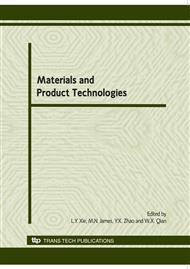p.75
p.80
p.90
p.95
p.100
p.105
p.111
p.116
p.121
Measurement on Fracture Roughness Values of the Cast Steel for Chinese Railway Rolling Wagon Bogie Frames
Abstract:
Measurement on fracture roughness values is investigated to the grade B cast steel for China railway rolling wagon bogie frames. Due to be limited by production bogie frame geometry, a ductile fracture roughness measuring method is employed for the present study. Experiments reveal that, when crack growth increments are very scattered, the code based measurement of 0.2 mm crack growth increment for gauge ductile fracture roughness may be not reasonable. And a measurement of 90 % maximum ductile fracture roughness should be suggested to be an appropriate measurement. The new suggested 90 % maximum fracture roughness measurement is verified to be effective for the fracture roughness values of the present material.
Info:
Periodical:
Pages:
100-104
Citation:
Online since:
June 2010
Authors:
Keywords:
Price:
Сopyright:
© 2010 Trans Tech Publications Ltd. All Rights Reserved
Share:
Citation:


